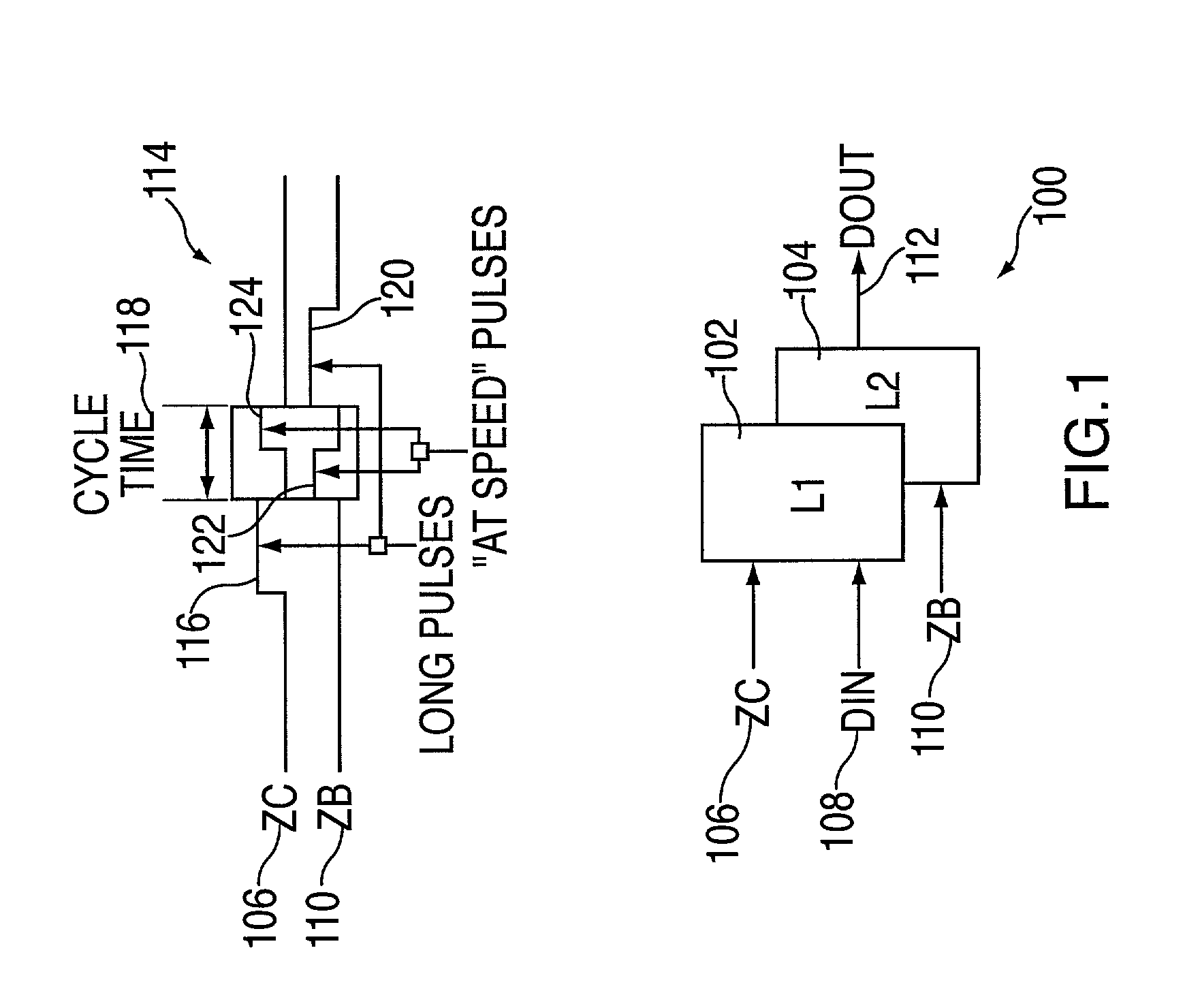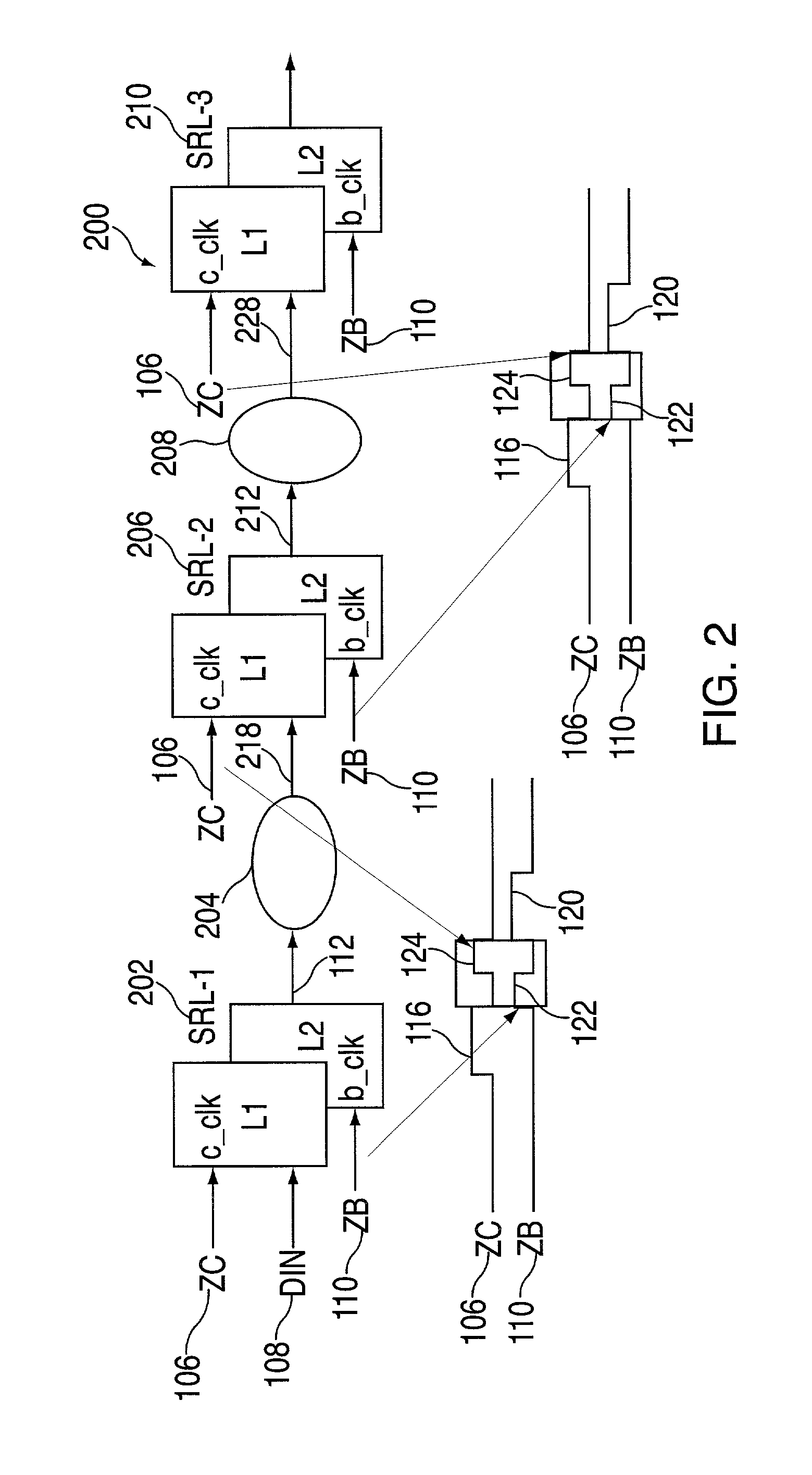Method and system for an on-chip AC self-test controller
a self-test controller and controller technology, applied in the direction of electronic circuit testing, measurement devices, instruments, etc., can solve the problem of becoming correspondingly more difficult to test and diagnose such circuits
- Summary
- Abstract
- Description
- Claims
- Application Information
AI Technical Summary
Benefits of technology
Problems solved by technology
Method used
Image
Examples
Embodiment Construction
[0012]The present invention discloses a method to perform an AC self-test using a scheme that renders distribution and tuning of control signals to the clock splitters noncritical. In an exemplary embodiment, the AC self-test is performed by first initializing all the shift register latches (SRLs) with test data using a process that is known in the art. The initializing can be performed by scanning all the SRLs within the integrated circuit with a set of pseudo random data by pulsing the scan clocks as many times as needed to fill the SRLs with data. The A clock is typically the scan clock the causes the test data at the L1 input port to enter the L1 latch and the B clock is typically the scan clock that causes the data from the L1 latch to enter the L2 latch and the input port of the next L1 latch in the chain. The A clock should pulse last so that L1 and L2 contain different data at the end of the scan or initialization operation.
[0013]Once the SRLs are initialized, the AC self-te...
PUM
 Login to View More
Login to View More Abstract
Description
Claims
Application Information
 Login to View More
Login to View More - R&D
- Intellectual Property
- Life Sciences
- Materials
- Tech Scout
- Unparalleled Data Quality
- Higher Quality Content
- 60% Fewer Hallucinations
Browse by: Latest US Patents, China's latest patents, Technical Efficacy Thesaurus, Application Domain, Technology Topic, Popular Technical Reports.
© 2025 PatSnap. All rights reserved.Legal|Privacy policy|Modern Slavery Act Transparency Statement|Sitemap|About US| Contact US: help@patsnap.com



